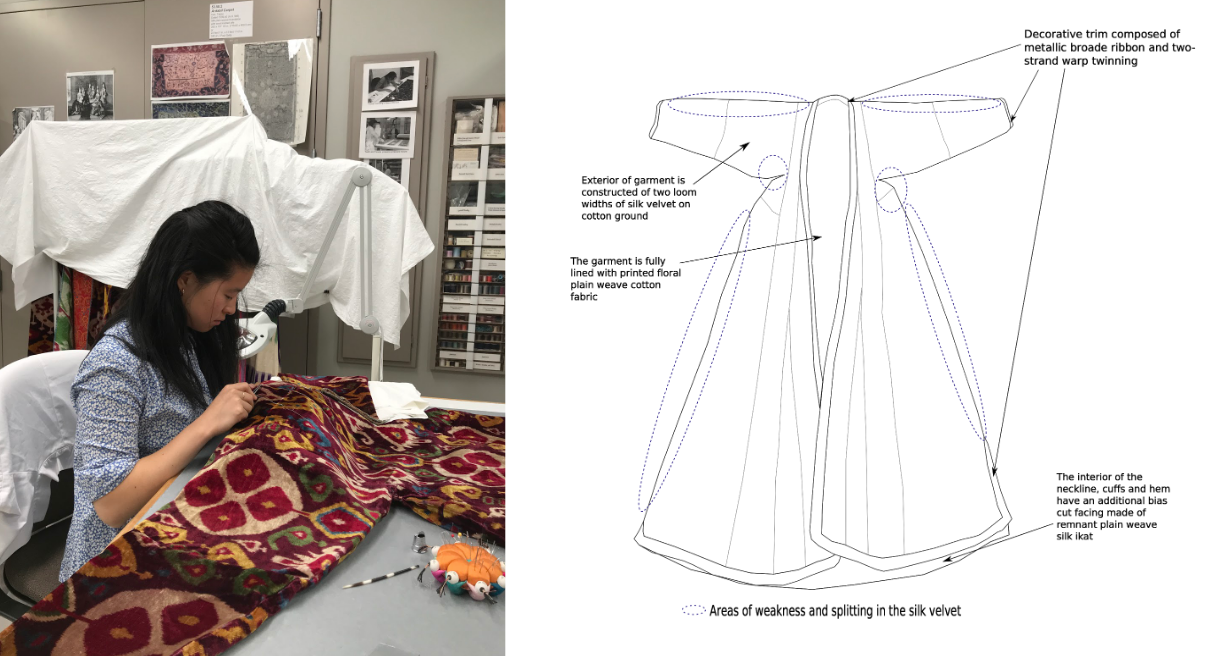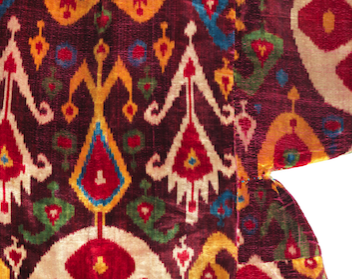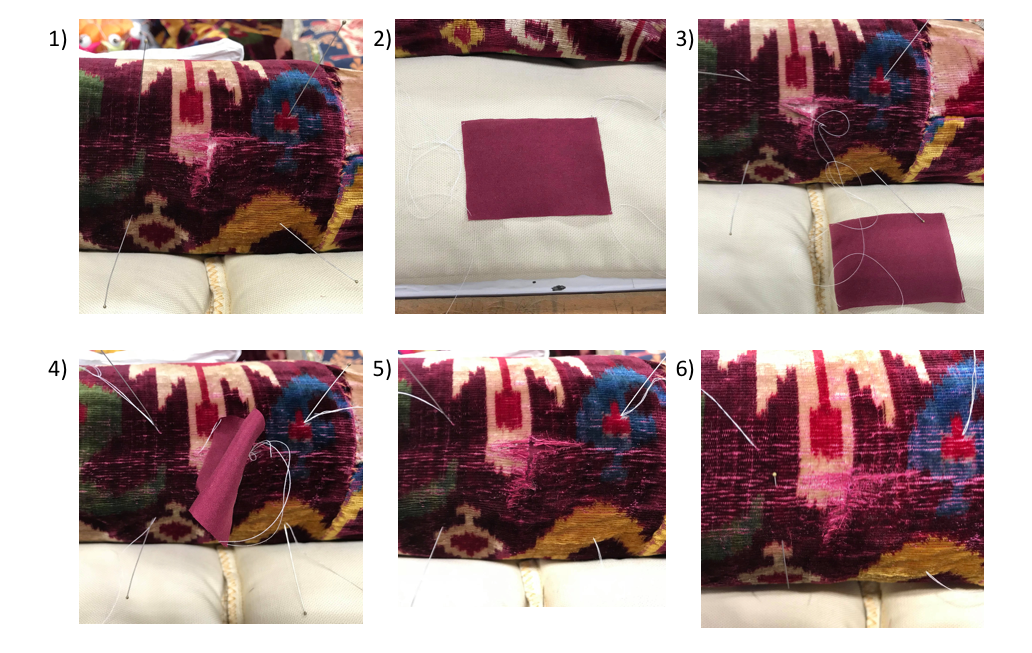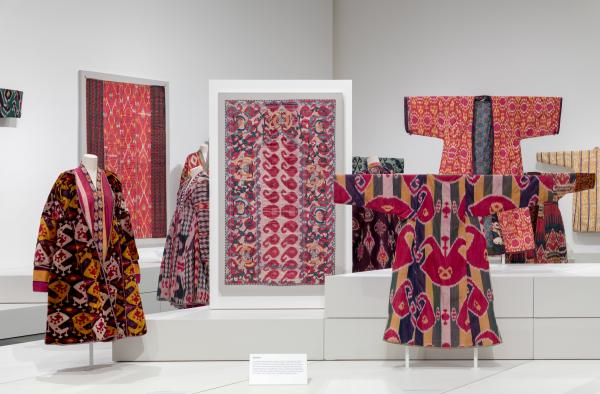The installation of Power of Pattern: Central Asian Ikats from the David and Elizabeth Reisbord Collection began on a gray winter day. Over a period of two weeks, about 60 robes, wall hangings, and accessories were installed, transforming the empty white gallery into a vibrant, jewel-toned space.
These textiles hail from Central Asia, a geographic region which encompasses modern day Kazakhstan, Kyrgyzstan, Tajikistan, Turkmenistan, and Uzbekistan. The range of motifs, patterns, and colors, as well as the mix of different textile fiber types and added embroidered trimmings, serve as a material representation of this historic trading hub. As one of the textile conservators working on this exhibition, I had the privilege of documenting, assessing, and treating a portion of these textiles.

One particular robe I became well-acquainted with, was a silk velvet munisak (traditionally a woman’s robe) dating to the third quarter of the 19th century. Velvet robes woven with silk such as this are rare and would have signified the wearer to be someone of high social standing. The weaving of a length of velvet fabric would have been expensive, both in time and resources. They are woven in a particular way to create a pile—a raised layer of threads—on the surface of the textile. The pile is what gives velvets their distinct plush appearance and feel.

Like many of the ikat robes in this exhibition, this robe showed signs of wear and tear typical of silk garments of its age. Areas such as the tops of the shoulders, underarms, and the back of the neck—which tend to experience more movement and stress—had large vertical and horizontal splits. As this robe was to be dressed on a T-stand mount, it was pertinent to support and stabilize these areas.
I chose to support the splits in this robe through the application of stitch supports. Within textile conservation, there are many different ways of applying a stitch support; the method and materials need to be compatible with the object and to provide the necessary structural support. I chose a medium weight silk fabric that was close in color to the purple-red background of this robe. This silk fabric was strong enough to support the weakened areas but still flexible enough to move with the surrounding areas of the garment without creating extra bulk.
Unfortunately, as this robe was fully lined, I had no direct access to the reverse of the velvet fabric. In order to insert the silk patch in between the silk velvet and the cotton lining, I utilized a method known as the “Rodeo” technique which was shared with me by a former classmate, who had interned at the Palais Galliera in Paris.

The entire conservation treatment of this robe took a total of 70 hours. The application of 15 silk patches took the bulk of the treatment time, with a significant portion dedicated to setting up this fiddly but oh-so-useful technique. Come see this beautiful robe in person!
Power of Pattern: Central Asian Ikats from the David and Elizabeth Reisbord Collection is on view in the Resnick Pavilion through July 28, 2019.



